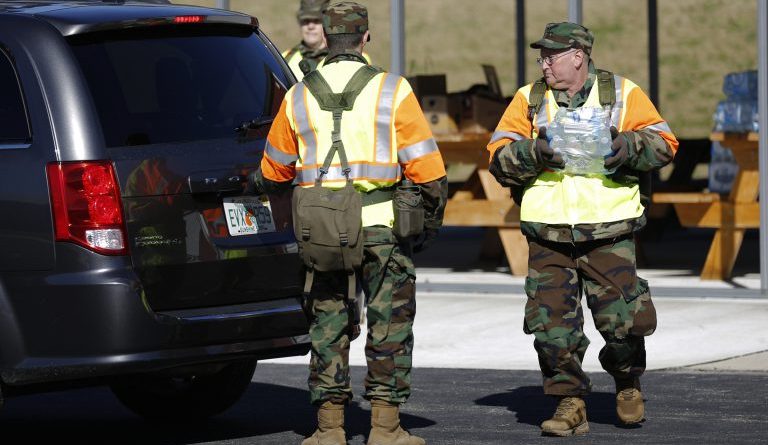VDF conducts point of distribution exercise, continues to evolve to meet new challenges
FORT PICKETT, Va. — Members of the Virginia Defense Force conducted a point of distribution exercise Nov. 3, 2018, in Blackstone and Crewe, Virginia, during a multi-day training assembly based at Fort Pickett.
VDF members also conducted evaluations on communication and incident management teams as well as set up and operation of mobile communication platforms. Instructors also taught a variety of professional development sessions for officers, noncommissioned officers and enlisted personnel. The exercise and professional development are part of the VDFs ongoing transformation and training focus to better support the Virginia National Guard.
“All the planning and preparation over the last several months came together in the execution of a great training event,” said Brig. Gen. (Va.) Justin Carlitti, commander of the VDF. “The local officials we worked with were very appreciative, and we saw first hand the kind of support and coordination we would be doing if we were responding to an actual emergency situation.”
The VDF is authorized by Title 44 of the Code of Virginia as the all-volunteer reserve of the Virginia National Guard, and they are a force multiplier and integrated into all VNG domestic response operations. Members of the VDF volunteer their time for training and are only paid when called to state active duty by an authorization from the Governor of Virginia. The VDF reports to the Adjutant General of Virginia as part of the Virginia Department of Military Affairs along with the Virginia Army National Guard and Virginia Air National Guard.
In the past several months, VDF personnel have been training on a variety of different security operations like access control, area guard and traffic direction, and those skills were all put to use during the POD exercise, explained Lt. Col. (Va.) D.J. Thornley, VDF operations officer.
Thornley also explained that the evaluations on communications and incident management assistance teams will help establish a baseline and guide training plans for next year. He said the VDF is looking to formalize two primary military occupational specialities for civil support security and interoperable communications. The civil support security MOS will focus on a number of different security tasks, and the communications MOS will be geared towards high frequency radio, STARS radio and incident management assistance skills.
The VDF is also looking to build on established relations with VNG joint staff elements and improve capabilities based off lessons learned from Hurricane Florence. Nearly 50 VDF personnel came on state active duty to assist the VNG with the statewide response Sept. 9-18, and they provided multiple capabilities including interoperable communications, operations center augmentation, operations center liaison, incident management assistance, state-managed shelter logistics and public information.
In the Virginia Emergency Operations Center, VDF personnel assisted with processing requests for support in Emergency Support Function 16, the VNG’s response cell in the VEOC. Incident management assistance teams helped with mission tracking in the Guard’s Joint Operations Center and other unit locations across the state, and VDF personnel operated a mobile communications platform 24 hours a day leading up to the storm. and helped with public information support as well as providing interoperable communications and incident management assistance to units in the field.
During domestic operations, the VNG receives missions through the Virginia Department of Emergency Management to assist the Virginia State Police and other state and local emergency service organizations as part of the state emergency response team.
Thornley said the VDF is looking to create National Guard Support Teams that will have habitual support relationships with VNG staff functions like ESF 16, the joint communications section and public affairs office. Each VNG staff section lead will determine the training requirements needed to support that section, and the VDF will make sure the training standards are met. Then when the VNG is activated for state emergency response duty, the VDF will provide personnel to work side-by-side with their designated section.
“The key point is that we need to align with National Guard and make sure we can effectively provide the support they need,” Thornley said.
The VDF is also looking to develop the capability to assist with providing a regional liaison resource to support VDEM’s seven regions of the state and help maintain effective information flow between the regions, the state and Guard forces positioned to provide support where there are needed.
The VDF will continue to develop plans for the new initiatives in the coming months, and training in 2019 will focus on meeting the required standards.
View more photos on Flickr:
VDF conducts point of distribution exercises in Blackstone, Crewe

